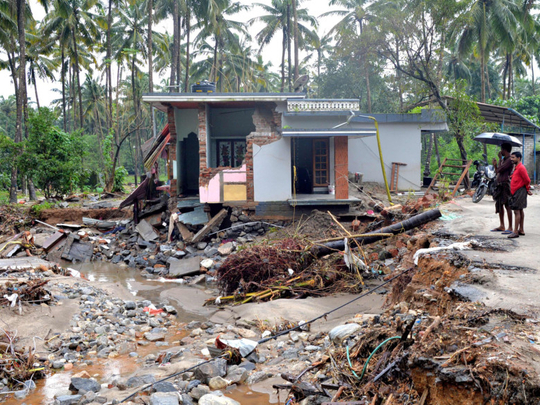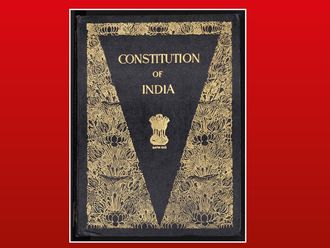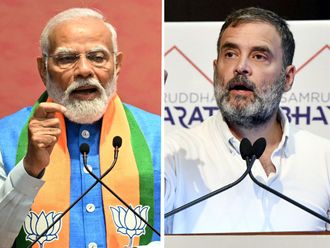
For millions of years, the monsoon wind, spurred by changes in land and sea temperatures, hardly failed to drench India annually, thus making the country a lush and fecund territory. But the wind’s erratic character has also brought agony for millions in the Indian subcontinent, either in the form of flooding or drought. The southern Indian state of Kerala got a taste of the moisture-laden wind’s whimsical nature, and endured the worst calamity witnessed in a century. With 477 casualties, 1.3 million displaced and financial losses amounting to more than Rs200 billion (Dh10.11 billion), Kerala — ‘God’s own country’, as it is popularly known — is indeed a devastated land, struggling to pick up the pieces. Strangely, the onset of monsoon in Kerala was quieter than usual this year, with the state receiving 29 per cent deficient rainfall early June, compared to the long-term average. So, what went wrong that the most productive rainy season on planet earth turned so deadly? There are several factors, primary of which being a sudden spurt in rainfall. From a false start to an abnormally high downpour — a total of 2,091.1mm as against the normal average of 1,606.7mm — Kerala was virtually besieged by incessant rainfall. As torrential rain pounded the state without a let-up, 35 out of the 42 existing dams in Kerala had to be thrown open simultaneously for the first time in history, that too during the monsoon.
It is a known fact that India has high vulnerability for floods, with 45.64 million hectares being flood-prone. A report prepared by the Planning Commission working group on flood control management programme revealed 7.55 million hectares of land, on an average, is affected by flooding each year, while damages caused to crops, houses and public utilities are estimated at Rs18.05 billion, apart from 1,600 deaths per annum. According to India’s National Emergency Response Centre, 2018 has witnessed one of the most destructive monsoons in recent times, with 1,400 fatalities from rain and flood-related causes recorded since May 28. Moreover, India’s Water Resources Ministry conceded in parliament, earlier this year, that between 1953 and 2017, as many as 107,487 people have lost their lives due to floods and heavy rains and the nation incurred an overall loss to the tune of Rs365.86 billion — which is equivalent to 3 per cent of the country’s current gross domestic product. But the question is, as India continues to sit on a tinderbox and keep mourning the losses after every disaster, what lessons did she learn from the depths of disarray, caused by such natural calamities? Or will the gory images of devastation in flood-hit Kerala fade into oblivion with the passage of time, just like the previous deluges?
World Bank notes that India accounts for one-fifth of global deaths due to floods and 25 million people will be exposed to the risk of severe flooding by 2040. Is the nation adequately prepared to cope with this crisis? A 2017 performance report on flood control and forecasting, compiled by India’s Comptroller and Auditor General, flagged serious inadequacies in flood emergency planning.
Shockingly, only 349 of India’s 4,862 large dams have emergency disaster action plans in place and the National Flood Commission’s recommendation of scientific flood zoning and assessment remains unfulfilled. High losses in terms of money and lives reflect the country’s inability to confront the adverse effects of climate variability. Whereas, the devastating floods of 2002 and 2013 in Europe saw an accumulated casualty of a meagre 135, the dance of death has been rather extreme in India during such emergencies. This despite the fact that India has a holistic national disaster management plan covering all stages of flood risk, fairly strong network of flood monitoring stations, reliable early-warning-system, bolstered by space-based technologies, and a well-trained and equipped disaster response force. All that is needed is to put these infrastructures into good use to prepare strategic flood mitigation responses that address effectively the vital issues of inadequate drainage, unplanned reservoir regulation and reckless urbanisation.
Seema Sengupta is a journalist and columnist based in Kolkata, India.











